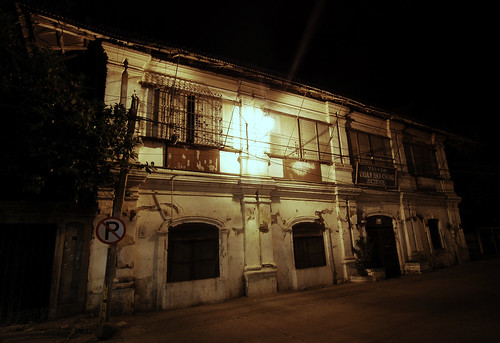
(Image courtesy of CPDO Files, Vigan City)
By 1764, there were already 21 sitios or barrios in Vigan as mentioned by Father Pedro de Vivar in the document entitled as “Relacion de los Alzamientos dela Ciudad de Vigan, cavesera dela provincia de Ilocos Sur el los años 1762 y 1763.”
In 1803, Ciudad Fernandina de Vigan has a population of 10,585 souls with 1,966 paying tributes. The natives were working on agricultural land and the mestizos engaged in business with other provinces including Manila. The mestizos played a very important role in the progress and prosperity of the city of Vigan.
The Chinese in Vigan on the other hand, settled in a place called “Pariancillo” while in Manila they were in “Parian”. With their talent and knowledge in business as well as their skills and mastery of the art of manufacturing, the Chinese became rich and powerful in society. They opened business in the heart of Vigan, employed the naturales, intermarried with the natives and mestizos of Vigan and as time passed by; they rose into the class of the elite. They triggered a business boom in the community and engaged in domestic and foreign trade. They exported indigo, lime, maguey, basi, jars, tobacco, woven cloth called abel, and other local products to Europe, China, Borneo and Malaysia. As a consequence of this business boom, there was a mark change in the lifestyle of the inhabitants.
Found in the Philippine Archives in Manila is a report in 1870 describing Vigan, the place. West of the cathedral are the Casa Real and the monument of Salcedo, north of the cathedral is a small house, and south of the cathedral is the Seminary. West of the Seminary were the hacienda publica, barracks of the Carabineros and the Ayuntamiento Municipal. Source: http://www.santa.gov.ph
To further justify the to category of Vigan as a city are the documents from “Instituto de Historia Programa de Modernization del Archivo Nacional de Filipinas” that describes that Vigan has its own carcel, casa de gobierno, mercado publico, Provincial High Court and one the only four (4) Public Works District in the entire Island of Luzon. More importantly, it has an Audencia Territorial, an implicit indication that it was a City.



No comments:
Post a Comment